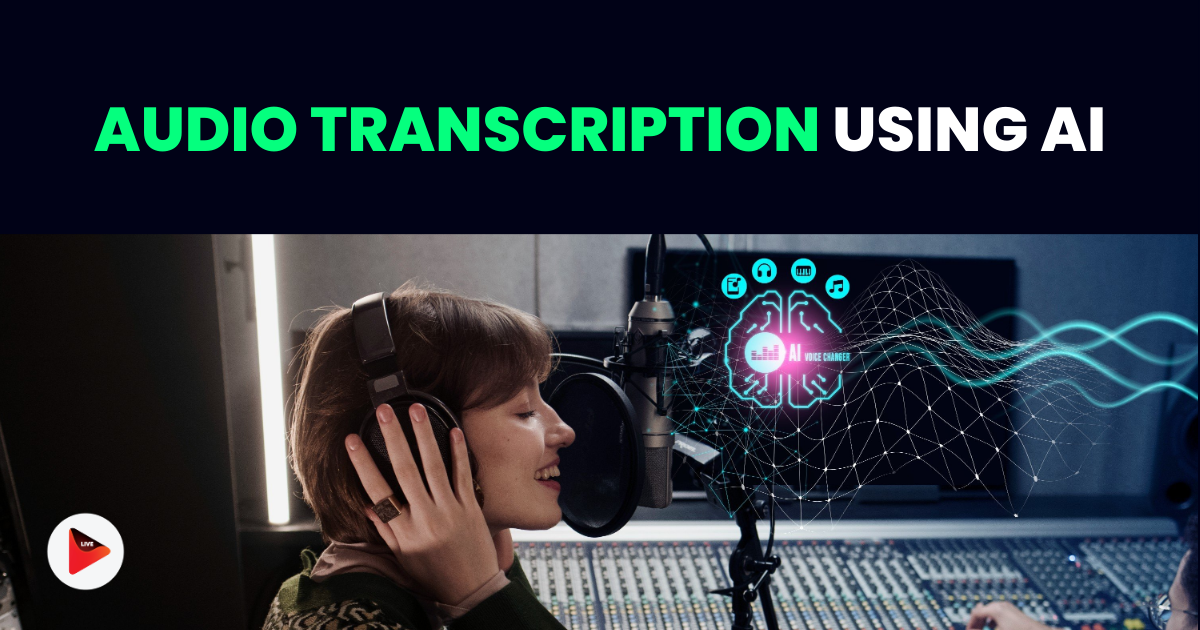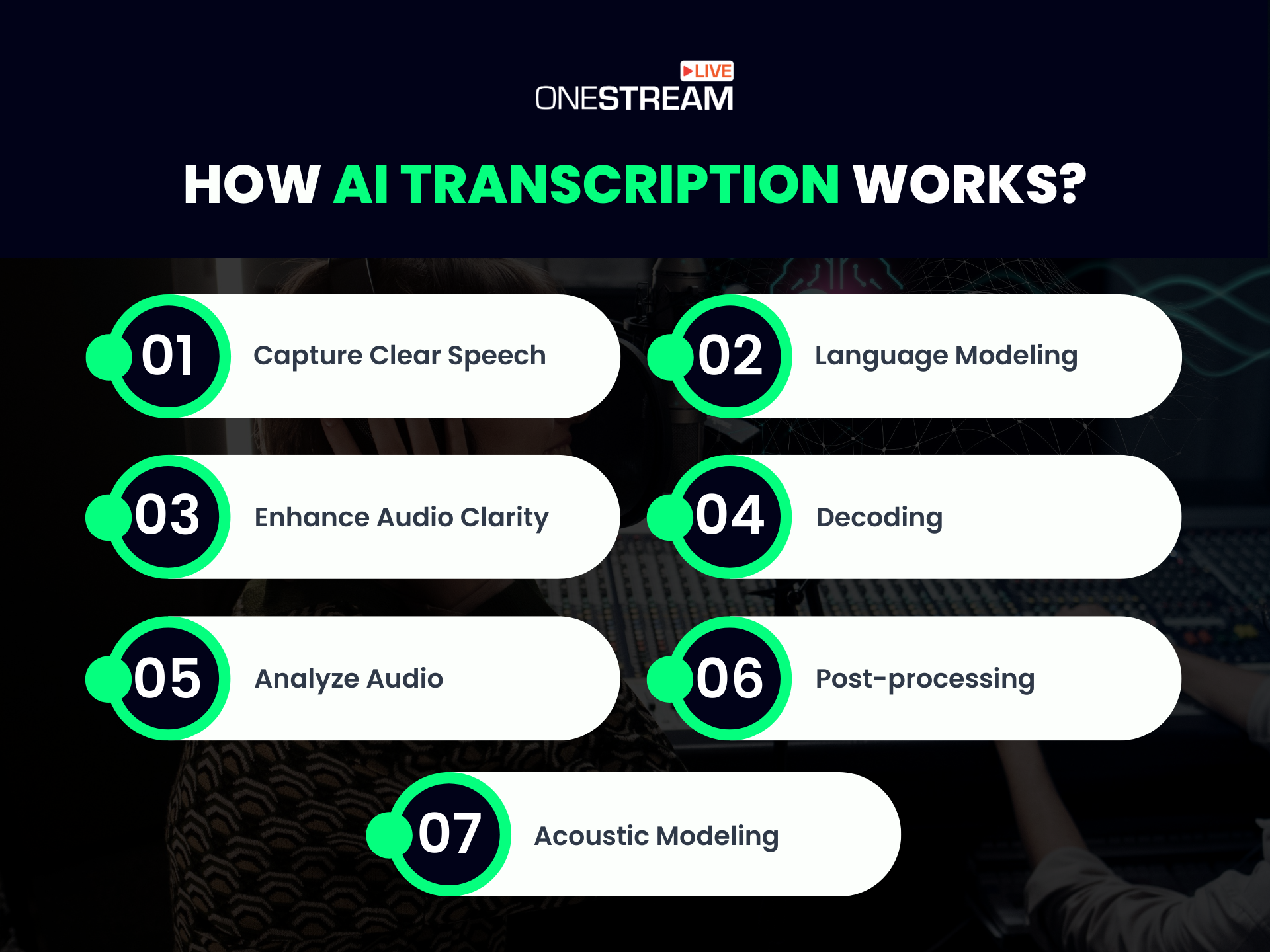For businesses generating substantial media content, AI audio transcription services are an emerging solution. Promising quick, cost-effective conversions from audio to text, AI transcription could revolutionize the industry. However, questions about the accuracy and reliability of AI-generated transcripts persist.
This article explores the effectiveness of automated transcription services compared to traditional manual methods, weighing their benefits and drawbacks to determine their suitability for your business.
In this Article:
Understanding Audio Transcription
Audio transcription converts spoken words into written text, initially developed to create accessible content for the hearing impaired. Over time, its applications have broadened significantly. Transcription aids in documenting recorded interviews for future reference and citation, provides subtitles for social media videos for viewers who prefer reading, and is essential for translating audio into other languages by first converting speech into text.
The Evolution of Automatic Transcription
Transcription has a wide range of applications, especially in media-rich industries. Traditionally, it required a human professional to listen and transcribe spoken words, a time-consuming process. AI-supported transcription software emerged as a solution, leveraging machine learning to enhance efficiency.
As audio transcription tools become more mainstream, skepticism remains about their quality. This article examines how AI transcription works and compares it to human transcription.
How AI Transcription Works
AI transcription relies on Automatic Speech Recognition (ASR) technology developed in the 1950s. ASR involves several complex steps to convert spoken words into text:
- Audio Input: Capturing spoken language via a microphone or other device, where input quality is crucial.
- Preprocessing: Remove background noise and enhance clarity to prepare the audio for analysis.
- Feature Extraction: Analyzing the audio to extract essential features using MFCCs and spectrograms.
- Acoustic Modeling: Mapping audio features to phonetic units, trained on extensive datasets for accuracy.
- Language Modeling: Predicting word sequences using grammatical rules and contextual understanding.
- Decoding: Combining outputs from acoustic and language models to generate text using advanced algorithms like HMMs, DNNs, RNNs, and Transformer models.
- Post-processing: Correcting errors, adding punctuation, and formatting text for readability.
Components of ASR Systems
ASR systems consist of various components working together:
- Microphone/Audio Input Device: Captures spoken input.
- Preprocessing Unit: Filters and normalizes audio signals.
- Feature Extraction Module: Converts audio signals into feature vectors.
- Acoustic Model: Maps features to phonetic units.
- Language Model: Predicts word sequences and corrects grammar.
- Decoder: Produces the final text transcription.
- Post-processing Module: Refines the text for readability.
Applications of ASR
ASR technology is utilized in numerous fields, including media production, assistive technology, and healthcare. It is essential for transcription, translation, subtitling, and voice-activated assistants like Siri, Google Assistant, and Alexa. ASR is also used in customer service IVR systems and language learning apps to improve speech recognition.
Comparing Human and AI Transcription Services
AI audio transcription offers speed, cost-effectiveness, and scalability, processing large volumes of audio quickly and at a lower cost. However, it struggles with accents, dialects, slang, background noise, and overlapping speech, areas where human transcribers excel. Human professionals provide better contextual understanding, speaker identification, and quality control, making them preferable for critical tasks.
Transcription services can be highly beneficial if your business handles media content requiring transcription, translation, subtitling, or dubbing. Services like Amberscript offer AI transcription for economical rates. Combining AI and human transcription ensures high accuracy, reflecting cultural nuances and specialized jargon. You can focus on other tasks with both options while ensuring precise transcription.
Conclusion
While AI can produce highly accurate transcripts (up to 85%), human involvement is necessary to refine the text further. Despite some limitations, AI transcription has evolved into a valuable tool for handling most of the transcription workload. Future advancements in machine learning promise even better accuracy and adaptability.
OneStream Live is a cloud-based live streaming solution to create, schedule, and multistream professional-looking live streams across 45+ social media platforms and the web simultaneously. For content-related queries and feedback, write to us at [email protected]. You’re also welcome to Write for Us!












